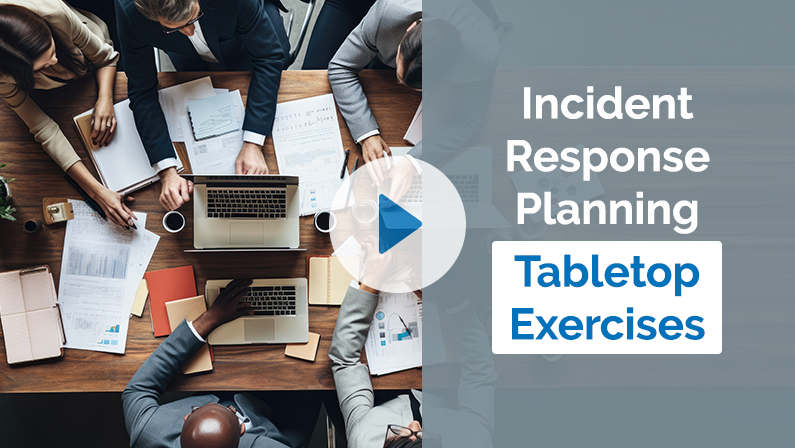Welcome to this segment of our cybersecurity series. Today’s topic is incident response, very specifically tabletop exercises.
So an incident response plan is going to include a lot of elements. And if you’re looking for cyber insurance or you have some regulatory compliance things that you need to deal with, or this is just part of your overall cyber resiliency or business continuity planning.
Tabletop exercises are essentially a simulation. It’s just like everything else you do. You practice, you flush out where you might have vulnerabilities or gaps in your plan, and then you continuously revise and adjust accordingly.
- So what I want to do, and we’ll go through this in further segments, but what I want to do today is just kind of highlight some of the key steps in that process.
- So obviously, the first thing you want to do is describe or define your primary goals for the exercise. I think you want to put the potential scope and the scenarios that you’re going to simulate.
- Obviously, you need to identify your participants and stakeholders.
- You need to set some ground rules. I think that’s very important to keep it kind of on the rails because these exercises will have a tendency to… to go off track and they can get lengthy. So I think you want to make sure that there’s some ground rules.
- Then you’re going to actually conduct the exercise, which should be an interesting experience for you if you’ve never been through it.
- Obviously, you’re going to capture your lessons learned.
- You’re going to report and make recommendations in terms of documentation after that.
- And then you’re going to go back and update your incident response plan because you’re going to learn things. Even though it was documented, maybe it wasn’t exactly the way that you thought it was.
- Then you’re going to schedule out further tabletop exercises. And I think probably quarterly, at least twice a year, you’re probably going to want to run through those because there are different scenarios and each one will prompt different types of responses and actions.
- And then finally, create a feedback loop. I think that that’s important to keep the momentum and the understanding of what you’re trying to accomplish.
So those are some of the key main steps of a tabletop exercise.
Again, look for more information out on our blog. You can find them on LinkedIn as well. And we’ll be doing more specific segments. And we’ll do a webinar later in the quarter on this particular topic. So thanks for your time. And Happy New Year, everyone.





